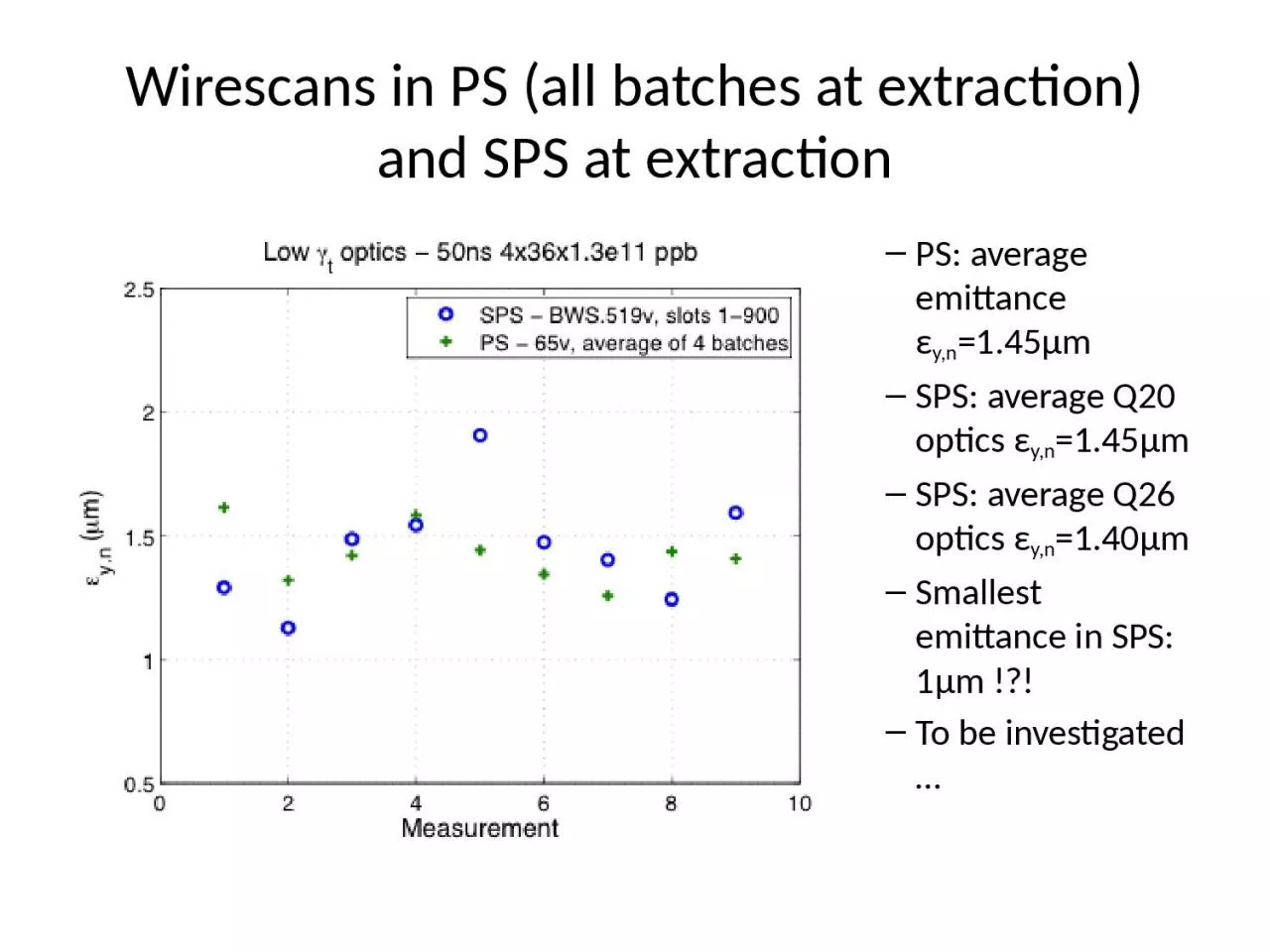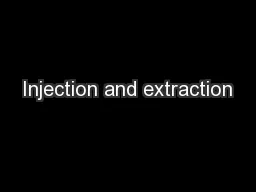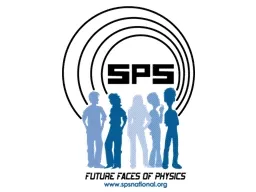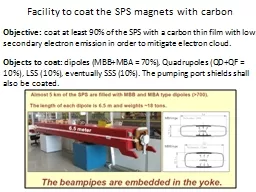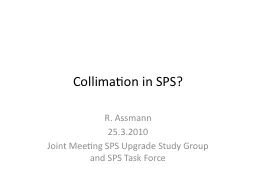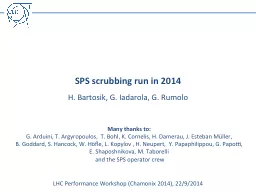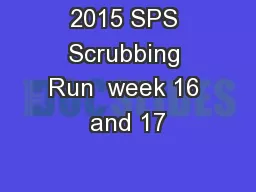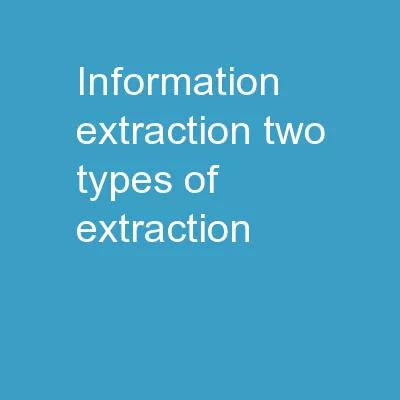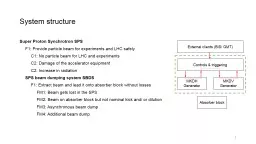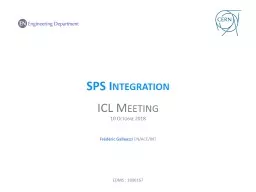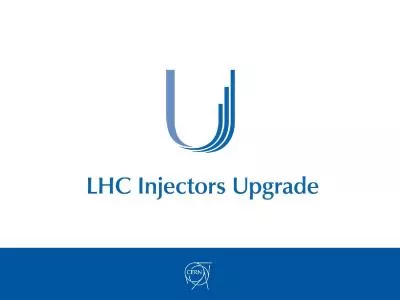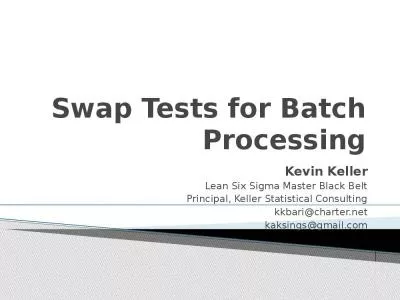PPT-Wirescans in PS (all batches at extraction) and SPS at extraction
Author : cora | Published Date : 2024-03-13
PS average emittance ε yn 145μm SPS average Q20 optics ε yn 145μm SPS average Q26 optics ε yn 140μm Smallest emittance in SPS 1μm To be investigated
Presentation Embed Code
Download Presentation
Download Presentation The PPT/PDF document "Wirescans in PS (all batches at extract..." is the property of its rightful owner. Permission is granted to download and print the materials on this website for personal, non-commercial use only, and to display it on your personal computer provided you do not modify the materials and that you retain all copyright notices contained in the materials. By downloading content from our website, you accept the terms of this agreement.
Wirescans in PS (all batches at extraction) and SPS at extraction: Transcript
Download Rules Of Document
"Wirescans in PS (all batches at extraction) and SPS at extraction"The content belongs to its owner. You may download and print it for personal use, without modification, and keep all copyright notices. By downloading, you agree to these terms.
Related Documents

